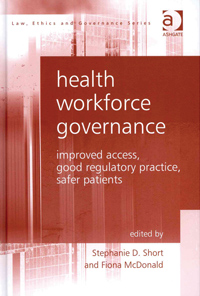
Health workforce governance: improved access, good regulatory practice, safer patients.
Stephanie D Short, Fiona McDonald, editors. Farnham, UK: Ashgate Publishing, 2012 (xix + 272 pp, $110). ISBN 9781409429210.
- Sarah L Larkins1
- General Practice and Rural Medicine James Cook University, Townsville, QLD
Correspondence:
Online responses are no longer available. Please refer to our instructions for authors page for more information.




